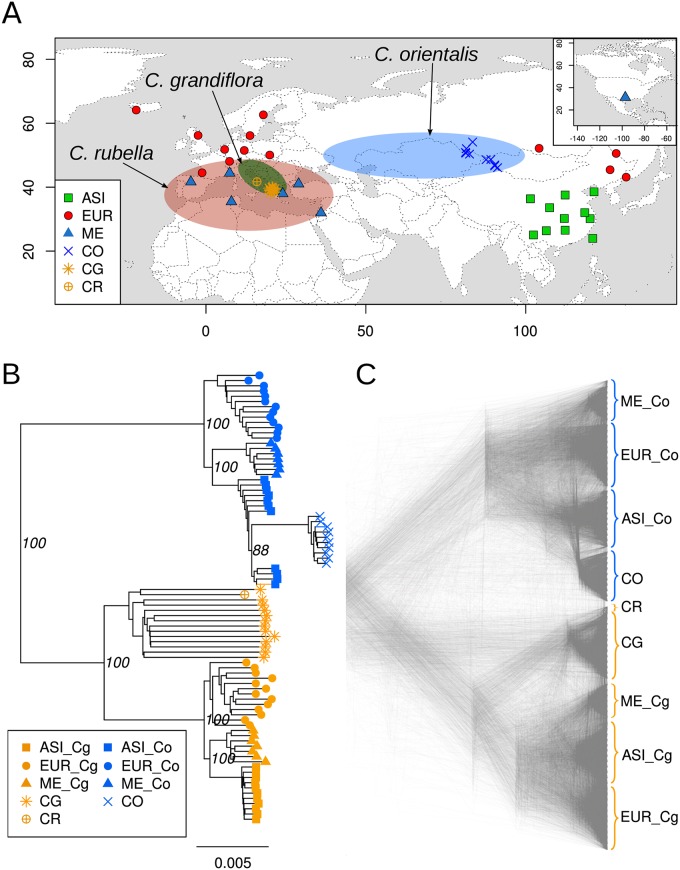Fig 1. Distribution ranges, sampling locations and phylogenetic relationships of Capsella species used in this study.
(A) Approximative distribution ranges of C. orientalis, C. grandiflora, and C. rubella and sampling locations of C. bursa-pastoris. C. bursa-pastoris has a worldwide distribution, so its distribution range is not specifically depicted. ASI, EUR ME, CO, CG, CR indicate Asian, European and Middle Eastern populations of C. bursa-pastoris, C. orientalis, C. grandiflora, and C. rubella, respectively. The distribution ranges are defined according to Hurka et al. [38]. (B) Whole genome NJ tree showing the absolute divergence between different populations of C. bursa-pastoris at the level of subgenomes. The CbpCo and CbpCg subgenomes are marked with Co and Cg. The bootstrap support based on 100 replicates is shown only for the major clades. The root N. paniculata is not shown. (C) Density tree visualizing of 1002 NJ trees reconstructed with 100 Kb sliding windows.

